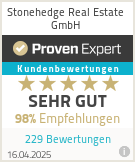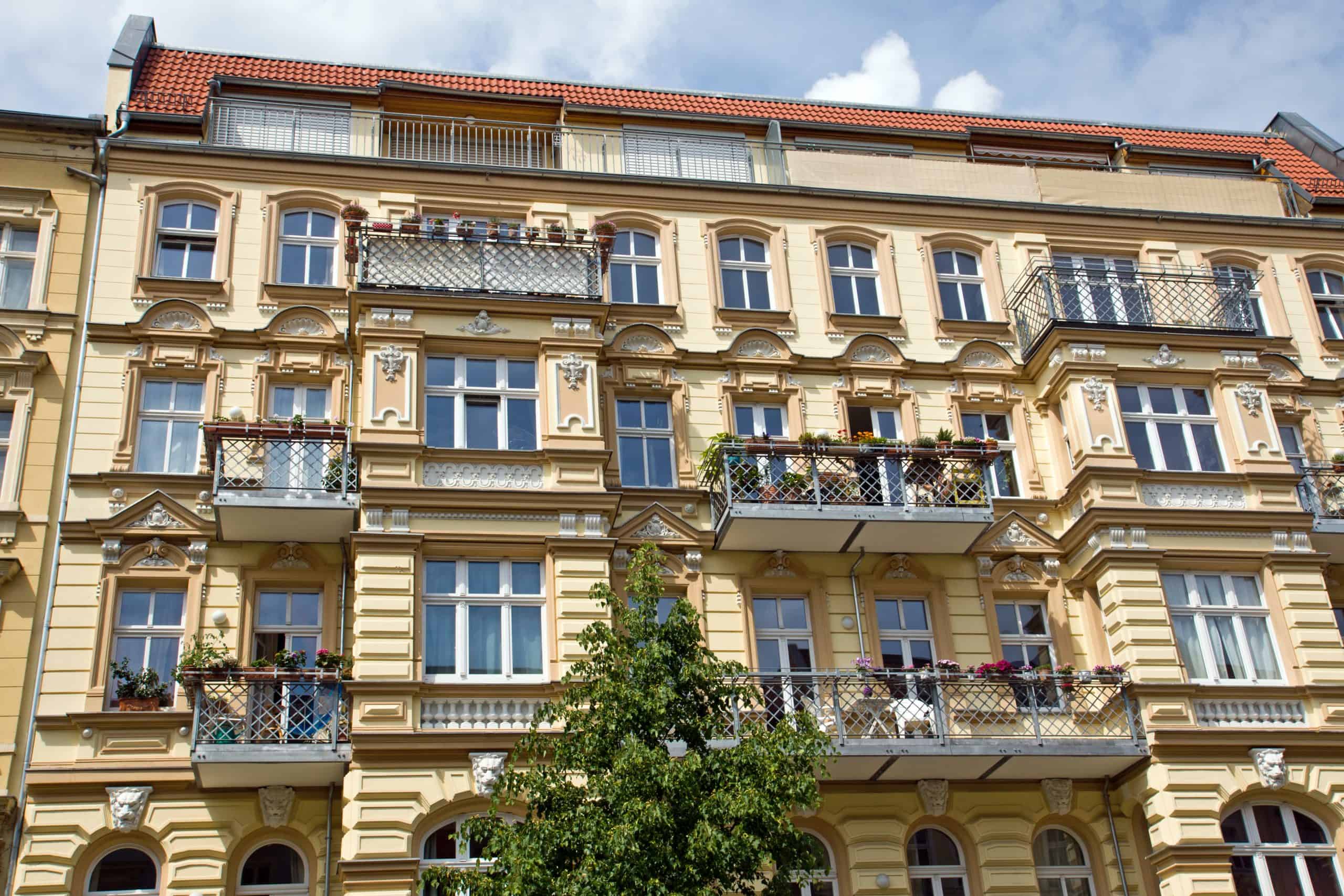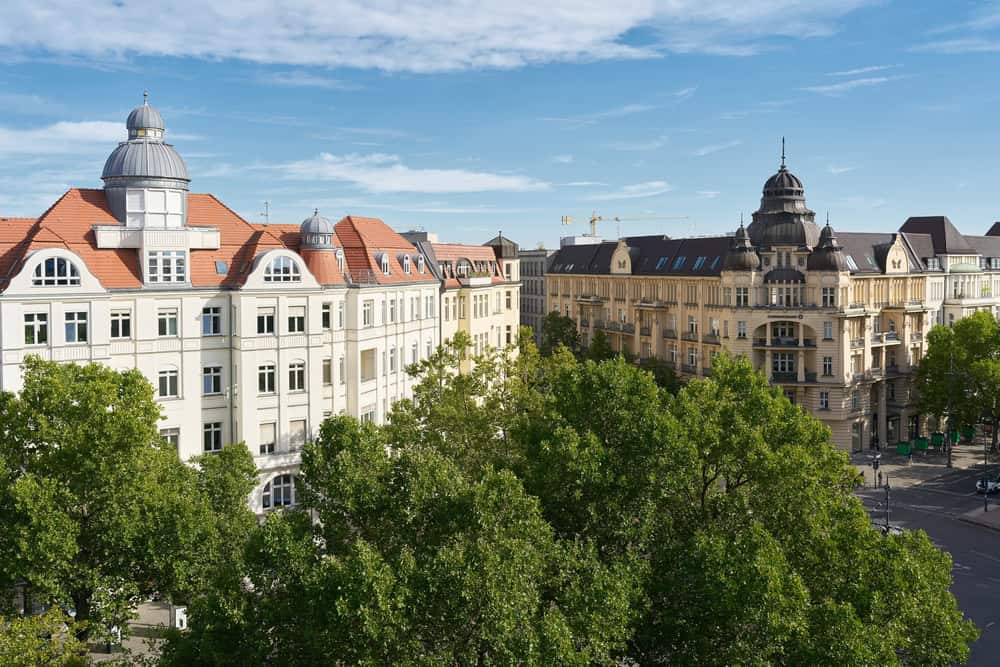The Berlin district of Charlottenburg is home to numerous celebrities as well as many long-established Berliners. As a result, the former Berlin district has a very special flair, which is reflected in both the architecture and the atmosphere of the residential area. Find out all about the sights and advantages of this popular district in West Berlin in this article.
The location of the Charlottenburg district in Berlin
Purchase price development for real estate in Charlottenburg
Currently in Q2 2022, the average purchase price for apartments in Charlottenburg is around €5,500/m². In the last year alone, there has been a price increase of 11% for the district. In comparison, apartments throughout Berlin have risen in price in the last 12 months 14 % more expensive have become. There has also been significant growth in the prices of houses in the district. The average price for houses in Charlottenburg is currently €5,730/m². In Q2 2018, it was still €3,796/m². This corresponds to an increase of 51% in the last 3 years. In 2021 alone, house prices have risen by 32%. On the other hand, the supply of real estate in this district has been in constant decline for 5 years.
Buying property in Charlottenburg
Around 2,580 properties were advertised for the Charlottenburg district in 2021. The median sales price for apartments is around €6,160/m². Prices also differ depending on the type of apartment. For example, the Median for single-floor apartments in Q2 2022 is relatively low at €6,090/m² compared to penthouses at €6,810/m² and penthouse units at €10,800/m².
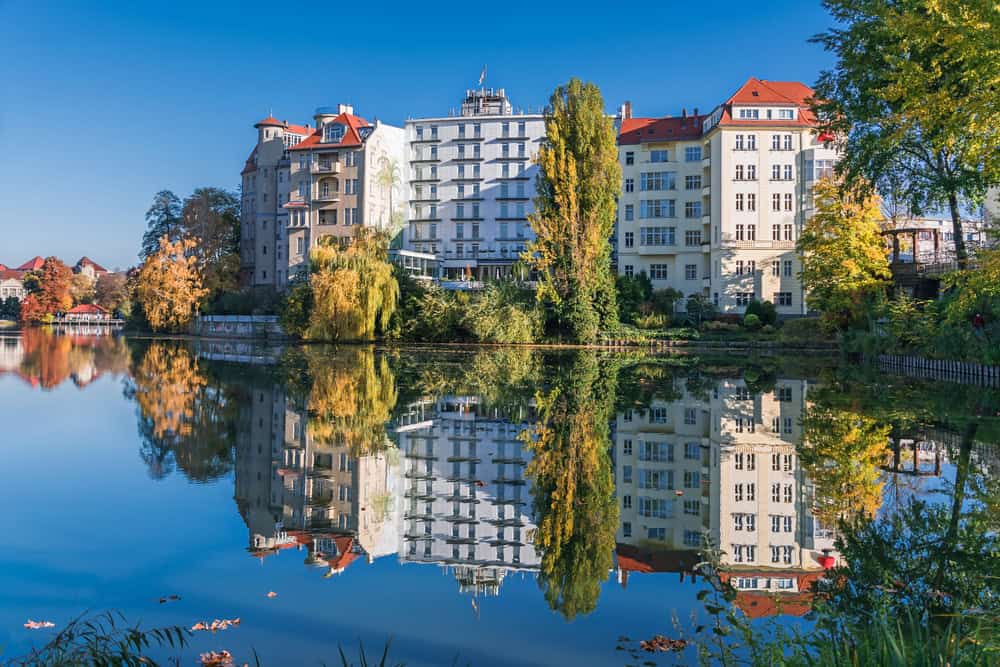
How much does a condominium in Charlottenburg cost?
The prices for condominiums in Charlottenburg range between € 3,403/m² and € 10,943/m² in Q2 2022. This results in an average Price between €5,000 and €6,000/m² for the purchase of condominiums in the popular Berlin district. There are also huge price differences between existing and new-build apartments. The median price for existing apartments in Charlottenburg is currently €6,160/m², while new-build apartments cost an average of €11,920/m² according to the median price.
How much does a house in Charlottenburg cost?
The cheapest houses in Charlottenburg have a price of 27.44 €/m², the most expensive cost 11,846 €/m². On average, this results in a Price per square meter for Q2 2022 between €5,500 and €6,500/m².
Rental prices in Charlottenburg
The average price of rental apartments in Charlottenburg is 12.08 €/m² in Q2 2022 This is almost 2 euros higher than the Berlin average. Compared to the previous quarter of this year, this represents an increase of 2.5%. The cheapest rental apartments are priced at €7.59/m², whereas the upper price limit is €23.07/m².
The differences between new and existing apartments must be taken into account here. The median asking rent for existing apartments is €16.95/m², compared to €31.70/m² for new-build apartments.
For The average net cold rent for houses is in Q2 2022 in Charlottenburg was €15.25/m², which means it has risen by a total of 28% since Q3 2018. The price range from the lowest to the highest price is very high. The lowest rent is €13.55/m², while the highest price per square meter is €21.47/m².
Here, too, the differences between new and existing apartments must be taken into account.
Residential areas and neighborhoods in Charlottenburg
As early as the 1920s, Charlottenburg was a symbol of exciting life in a big city thanks to the Kurfürstendamm shopping arcade. Due to the subsequent war and the construction of the Berlin Wall, Charlottenburg faded somewhat into the background. Now, however, the former borough is more modern and attractive than ever before. Charlottenburg is divided into four districts: Charlottenburg Südost, Charlottenburg Südwest, Westend and Charlottenburg-Nord.
Charlottenburg Southeast
This district is particularly famous for the 3.5 km long Kurfürstendamm. However, Charlottenburg Südost also has other attractions to offer. Tauentzienstraße is home to numerous offices, chain stores and hotels, making “Tauentzien” the largest shopping area in the whole of Berlin next to “Kudamm”. The area around Breitscheidplatz is currently being redeveloped. Many buildings with unusual architecture are being constructed here, including offices, stores, hotels and apartments.
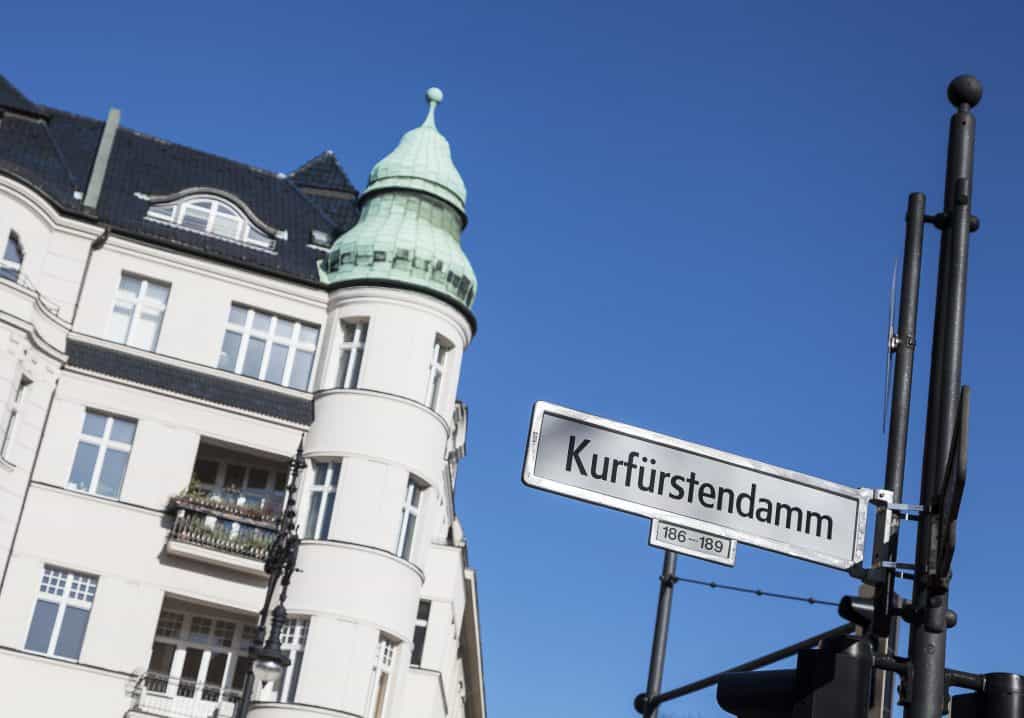
Charlottenburg Southwest
Charlottenburg Südwest begins to the west of Leibnizstraße. It is rather quiet and moderate here. Numerous green spaces, restaurants and weekly markets provide the ideal infrastructure for residential areas. Of course, the district also has a lot to offer visitors. These include Charlottenburg Palace, which used to be the center of the village of the same name, and the surrounding park, as well as the traffic-calmed Klausenerplatz. Around the Lietzensee lake is the Witzleben area, which is also a popular residential area due to its proximity to water and nature. Young families with children in particular live around Stuttgarter Platz and Adenauerplatz, while the Mierendorffkiez is a mixture of old and social housing. Here you can relax from the stresses of everyday life in the Österreichpark on the banks of the Spree with its sunbathing lawns, park benches and much more.
Westend
Reichsstraße between Theodor-Heuss-Platz and Steubenplatz forms the center and shopping mile of Westend. The new development area in this district is called Neu-Westend. Neu-Westend is also a highly sought-after villa colony, with buildings from the early 20th century and the 1950s, where many famous personalities lived. Numerous well-known artists and writers also lived in the Eichkamp estate in the last century. It was originally built as an estate for low-income civil servants and is located in Charlottenburg between the AVUS and the Heerstraße estate. The latter is now a listed building. Many trees grow here, especially pine trees, and the Grunewald forest also borders directly on the residential area. The Heerstraße estate consists mainly of terraced and semi-detached houses.
Charlottenburg-North
The fourth district, Charlottenburg-Nord, is bordered by the Havel to the east and the Spree to the north. There are many residential and allotment garden areas here, such as the Ringsiedlung and the Charlottenburg-Nord housing estate. The Paul-Hertz-Siedlung is bordered by 2 highways, a garden area and the Heckendamm, forming a kind of “island”. Plötzensee is the name of a district that is also part of Charlottenburg-Nord, although the lake that gave it its name actually belongs to the Wedding district in Berlin’s Mitte borough.
The mill conservation areas of Charlottenburg at a glance
In the last four years, Charlottenburg has defined a number of conservation areas in which the architecture and composition of the respective region must not be destroyed by new buildings. These areas in Charlottenburg currently fall under Environmental protection:
- Mierendorff Island
- Gierkeplatz
- Klausenerplatz
- Old Lietzow
- Jungfernheide
- Karl-August-Platz
- Richard-Wagner-Straße

Things to know about Charlottenburg
The district of Charlottenburg was formerly an independent district of Berlin and is now part of the Charlottenburg-Wilmersdorf district. It is located in the central-western part of Berlin and is bordered to the east by the Havel and to the south largely by the Spree. Until 1920, Charlottenburg was an independent town and for a long time served Berliners as a place for a relaxing vacation. The District has an area of 10.6 km² and a population density of 12,204 inhabitants/km². A total of approx. 129,359 people lived in Charlottenburg at the end of 2020.
Infrastructure in Charlottenburg
The Charlottenburg district has good infrastructure and transport connections. The number of available apartments currently falls short of demand, which is why there is a constant stream of conversions and development projects in Charlottenburg. Numerous green spaces and residential areas as well as good transport links make the district particularly attractive for young families and employees.
Demographic situation
At the end of 2020, a total of 129,359 residents lived in the Charlottenburg district , just over half of whom are female. Most of the residents in this district are between 27 and 45 years old. Overall, 47.34% of residents have a migration background, while foreign residents make up 28.82%.
Schools, kindergartens and playgrounds
In the Charlottenburg-Wilmersdorf district there are 75 schools, 36 of which are elementary school alone. There are also 2 universities in this district. There are a total of 30 playgrounds in Charlottenburg, and 123 in the district as a whole. 255 privately funded daycare facilities are also available for children and young people.
Swimming pools
A total of 3 swimming pools in Charlottenburg allow you to splash around and swim to your heart’s content. Two of the pools are outdoor pools, while the “Alte Halle” municipal pool is, as the name suggests, an indoor pool.
Transport links
Charlottenburg has a good infrastructure in terms of transport connections. The district is connected to the A111 and A100 city highways. There are also 4 subway lines and 2 S-Bahn lines that run here regularly. Numerous buses provide flexibility and mobility throughout Charlottenburg.

The parking situation in Charlottenburg
As Charlottenburg is a so-called parking space management zone, residents must apply for a parking permit from the relevant district office in order to be able to use the parking facilities in the district. However, the permit only gives you permission to park in a specific zone and not a legal right to a parking space. Due to the high population density in a district that is so centrally located in Berlin, the parking situation in Charlottenburg is generally considered tense.
Party shares
In the last general election, the SPD received the most votes in the Charlottenburg-Wilmersdorf district with 27.9%. The second strongest party was the Greens with 24.4%. The CDU also won over some voters with 22.3%. The other parties fared rather poorly in comparison. Only 9.7% of voters in the district voted for the FDP, 5.7% for the Linke, 4.3% for the Linke and 5.7% for another party.
Doctors, clinics and hospitals
The Berlin-Charlottenburg district has a total of 8 hospitals. There are currently around 1,100 doctors and 680 dentists working in the Charlottenburg-Wilmersdorf district. In addition, 124 care services with 4,071 employees and 42 care homes with 1,943 employees were reported for 2017.
Art, culture and gastronomy in Charlottenburg
Charlottenburg has a lot to offer its residents and numerous visitors, both gastronomically and culturally. We particularly recommend a visit to the “Theater des Westens” or a cozy meal at the “Schwarzes Cafe”. If you prefer oriental cuisine, the “Koshary Lux” restaurant in Charlottenburg is perfect. For lovers of European and especially French films, the “Cinema Paris” offers the perfect backdrop.
Museums
Charlottenburg is home to a total of 7 different museums. One of the most famous museums is Charlottenburg Palace, former residence of the queen of the same name, with the famous Belvedere, the colorful Orangery and the monumental Mausoleum. But the other museums in Charlottenburg are also certainly worth a visit.
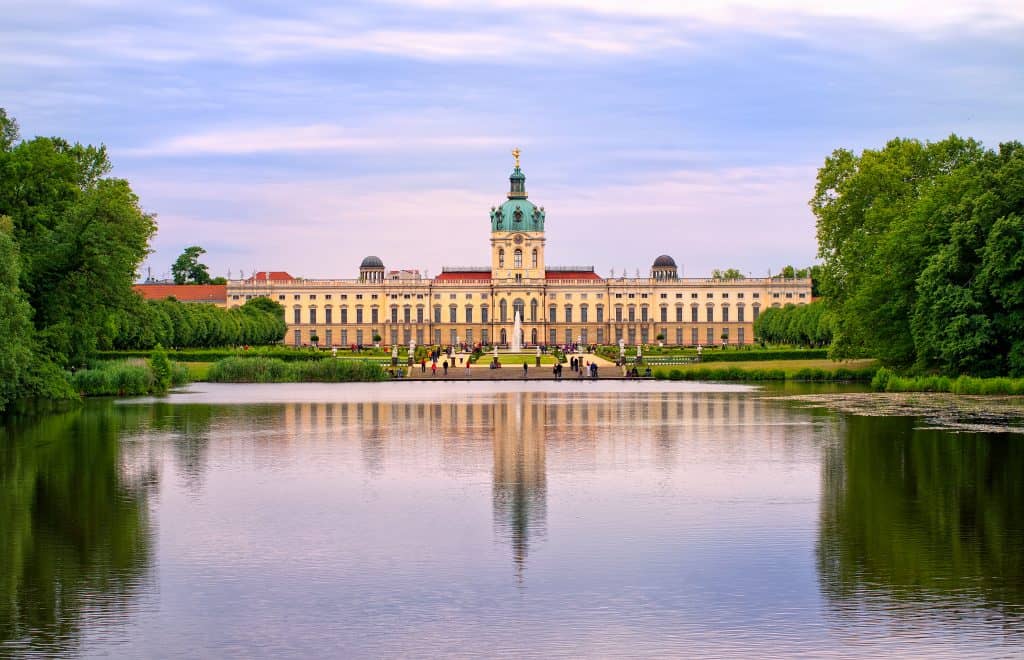
Cultural venues
A stronghold of culture: numerous theaters and cinemas provide entertainment and artistic enjoyment in Charlottenburg. Whether opera or literature house, the Zoo-Palast cinema or the quaint Kantkino, there really is the right program for every taste here.
Shopping
Every German has certainly heard of Kurfürstendamm. The legendary shopping mile attracts many thousands of visitors to Berlin-Charlottenburg every year. But the district also offers Germans with a penchant for shopping other opportunities for extensive shopping. Wilmersdorfer Straße and Breitscheidplatz are home to numerous department stores and stores for strolling, window shopping and bargain hunting.
Going out
The clubs and nightlife options in Charlottenburg are not necessarily for those on a budget. Not every partygoer can afford to have a party at “The Pearl” and “808”. On the other hand, the ambience is exclusive and some celebrities hang out in these trendy clubs.
Restaurants, cafés, bars
In terms of gastronomy, Charlottenburg offers an incredible variety of restaurants, bistros and eateries of all nationalities and flavors. Here you will literally find one or numerous options for every letter of the alphabet to strengthen your physical well-being and discover culinary delights. If you’re spoiled for choice, you’re spoiled for choice – and that’s definitely true of the gastronomy in Charlottenburg.
Tip: Enjoy Asian cuisine in Charlottenburg
A special treat: Asian restaurants in Charlottenburg. Asian cuisine is particularly popular in this part of Berlin. There is a wide selection here, both culturally and in terms of price, so there is guaranteed to be something to suit every palate and budget. Inconspicuous from the outside, but particularly popular with the residents of the district: the “893 Ryotei”. Diagonally opposite is the noodle house Lon Men, which is particularly famous for its Asian pasta specialties.
Tips for things to do and activities in Charlottenburg
Charlottenburg has all the splendor and esprit of the old West Berlin. Here you will find some inspiration for things to do and activities in this Berlin district:
Stroll along the Kurfürstendamm
One of the most famous streets in all of Berlin: the 3.5 km long Kurfürstendamm invites you to stroll, store and linger. Other sights such as the Berlin Zoo, the Museum of Photography and the Kaiser Wilhelm Memorial Church are in the immediate vicinity.
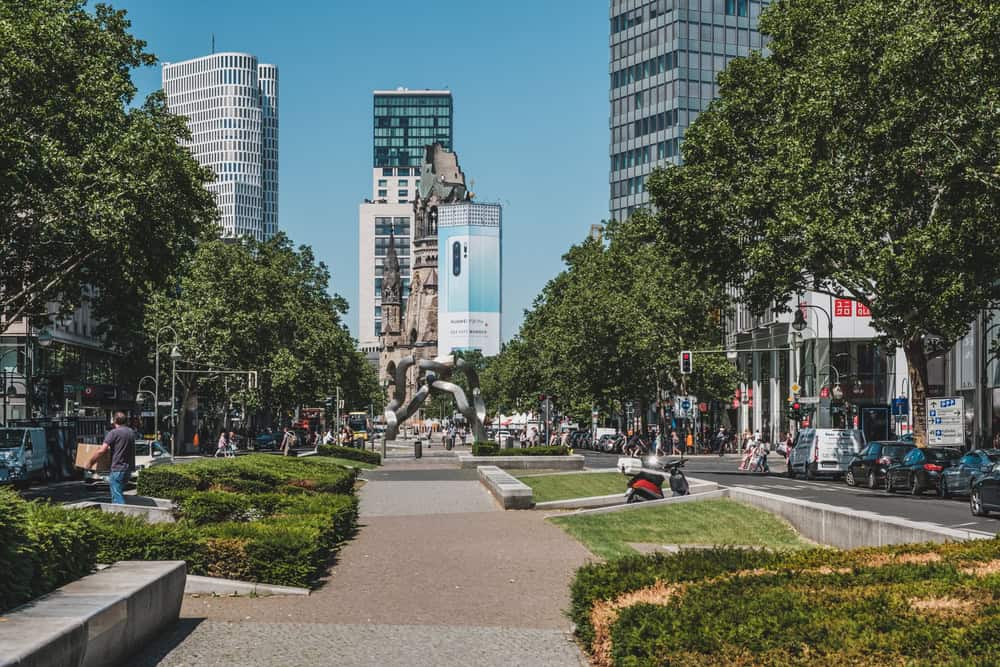
Experience cinema at the Zoopalast
The Zoopalast has been considered Berlin’s most glamorous cinema for many years. In 2013, the Zoopalast was renovated in line with its listed status and boasts an atmosphere reminiscent of 1950s cinemas. A cocktail bar and Dolby 7.1 sound systems make the cinema experience perfect.
Jogging along the Lietzensee
Lietzenseepark is perfect for running or jogging along the famous Lietzensee lake. The 2.2 km long route runs along the shore of the lake without any inclines. Access to Lietzenseepark is possible around the clock.
Conclusion
The Charlottenburg district of Berlin is currently a sought-after location. Numerous shopping opportunities, a heterogeneous population, different location typologies and excellent cultural and transport facilities are causing real estate prices for renting and buying apartments and houses in this region to grow rapidly. The increasing housing shortage is also contributing to this, as is the high development momentum in Charlottenburg. All of this points to favorable investment conditions that suggest a high potential for value appreciation. There is currently no end in sight to this upward trend on the real estate market.
